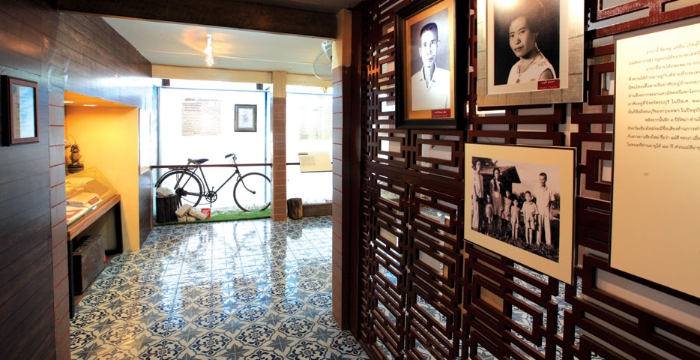Details
1. Wat Phrathat Lampang Luang (วัดพระธาตุลำปางหลวง)
Having been the most revered and historical temple of Lampang for a long time since the reign of Queen Chammathewi in the late 15th century, according to legend, this monument is one of the country’s most complete wooden temples enhanced with numerous ancient architectures. Phrathat Lampang Luang is the designated stupa for people who were born in the Year of the Ox, according to the Chinese zodiac. The construction was also begun and finished in the Year of the Ox. The stupa features a lotus moulded base supporting the round-shaped body in the Lanna style covered with Thong Changko or alloy plate.The top is made of gold embossed with various Prachamyam patterns. This stupa style had an influence on Phrathat Hariphunchai and Phra Borommathat Chom Thong. Its body enshrines the Lord Buddha’s hair and relics from his right forehead, and the front and back of his neck. On the brass fence encircling the stupa is a hole from the bullet that NanThip Chang, a Lampang hero, shot Thao Maha Yot, a ruler of Lamphun.
Location: Tambon Lampang Luang, Amphoe Ko Kha, Lampang.
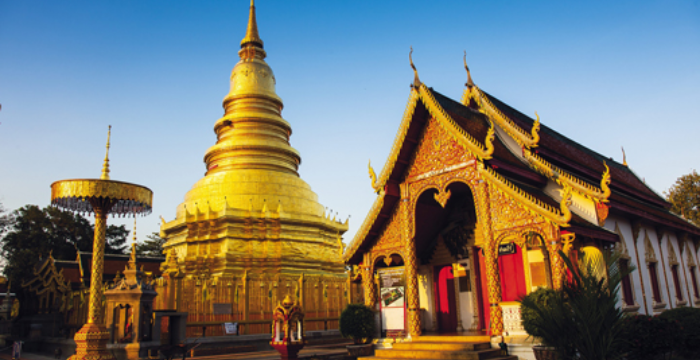

2. Wat Phrathat Doi Phra Chan (วัดพระธาตุดอยพระฌาน)
Wat Phrathat Doi Phra Chan is situated on a peaceful mountaintop called Doi Phra Chan where the breathtaking scenery of Amphoe Mae Tha can be seen. Visitors can appreciate a panoramic view of the lush vegetation in the rainy season and admire the beauty of the sea of mist in the morning in the cool season.
Location: Tambon Pa Tan, Amphoe Mae Tha, Lampang.
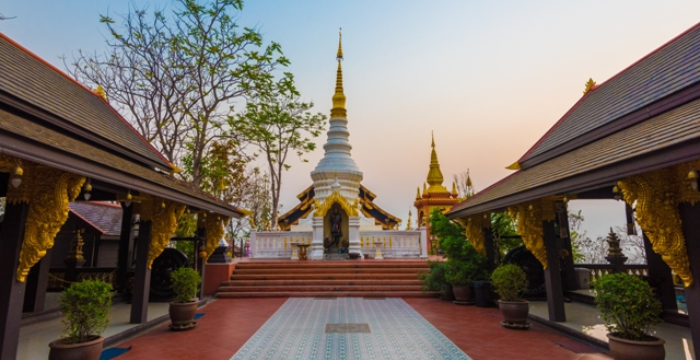

3. Wat PhutthabatSutthawat (วัดพุทธบาทสุทธาวาส)
Formerly known as Wat Chaloem Phrakiat Phra Chomklao Rachanuson (Wat Phrabat Pu Phadaeng) or locally called Doi Pu Yak (Doi Phrabat Pu Phadaeng), the temple is acclaimed to be the Unseen Thailand attraction that encompasses steep rocky terrain and a golden pagoda built on the top of a high hill. At the pagoda’s peak is installed a sacred Buddha’s Footprint. Tourists can drive and park at the front of the temple at the lower level. To get to the upper part on the mountaintop, they need to drive for about 1 kilometer then walk for about 1 kilometer as well.
Location: Mu 7, Ban Thung Thong, Tambon Wichet Nakhon, Amphoe ChaeHom, Lampang.
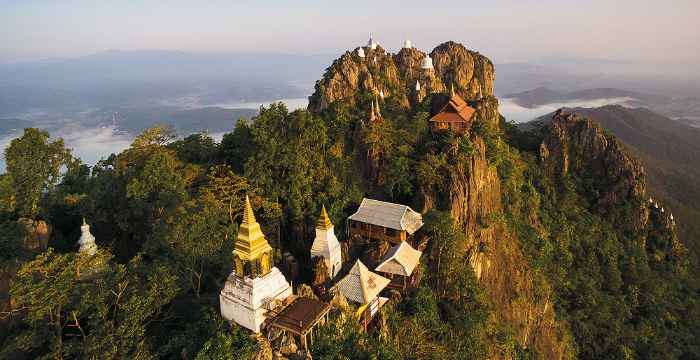

4. Chae Son National Park (อุทยานแห่งชาติแจ้ซ้อน)
Chae Son National Park is occupied by mineral streams blending with beautiful natural rocky reefs amidst a hot basin. The temperature of the mineral water is approximately 70-80 degrees Celsius that can boil eggs within 15 minutes. The boiled eggs will result in cooked egg yolk and not hardened egg white like young coconut.Usually, the eggs will be brought to make a famous menu of “spicy mineral egg salad”.Namtok Chae Son and the Chae Son National Park are about 1 kilometer apart. When the stream from the waterfall runs down to meet the hot waterway, it becomes warm mineral water.The Park provides standard mineral bathrooms for mineral bathing to accommodate visitors. It is ideal for family groups and available all-year round.
Location: Mu 8, Lampang-Den Chai Road, Tambon Wang Nguen, Amphoe Mueang Pan, Lampang.


5. Thai Elephant Conservation Center (ศูนย์อนุรักษ์ช้างไทย)
The Center was founded 10 years ago in Amphoe Ngao with an objective of training elephants to work on logging in the forest. However, 20 years later, the government cancelled the forest concession nationwide. Subsequently, elephants were out of work and sent back to the elephant training school, but there was not enough space for all the elephants. Therefore, the school was moved to Amphoe Hang Chat where it is still located today. The Center has allocated an area for an elephant hospital to take care of ill elephants and new-born elephants, and set up a paper factory made from elephant dung for sale, which are added value by making it into various products like paper for letters, envelops, notebooks and other items. The paper factory is open to visitors for observing how to make paper from elephant dung as well. It includes a factory for biofertilizer from elephant dung, a biogas power plant for generating electricity to use within the Center, the royal elephant stables, and elephant showground. The elephant show will focus on the logging activities. Training as a mahout is available for interested persons in which they will have a chance to join the elephant show or choose to stay overnight.
Location: Amphoe Hang Chat, Lampang.
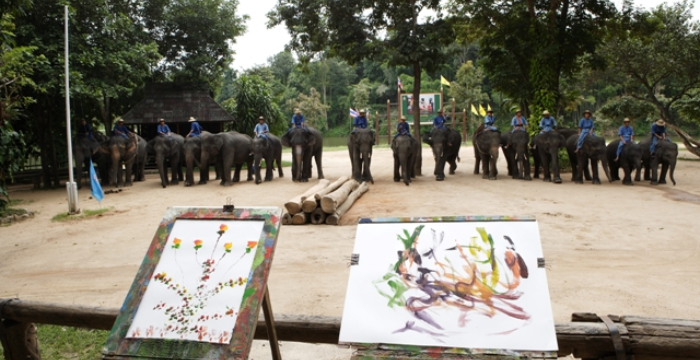

6. Wat Si Rong Mueang (วัดศรีรองเมือง)
Formerly named Wat Tha Khanoi Phama, it is one of the beautiful Burmese temples in Lampang that was built in 1903 by a wealthy Burmese man who came to town for the logging business. The construction took about 7 years. The temple consists of interesting Burmese art: the wihan is made of teak wood with a multilayered roof inthe Burmese style and perforated galvanized iron that is decorated on the gable and eaves. The wooden pillars in the wihan are decorated with colorful mosaics. The temple used to have both a large wihan and nine small wihans. Today, those small wihans have disappeared. Only the large one that is the principal wihan of the temple remains. To date, this temple is aged about 103 years.
Location: Amphoe Mueang, Lampang.
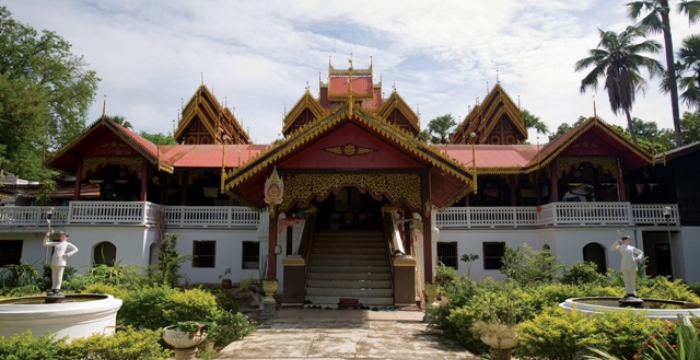

7. Wat Pong SanukNuea (วัดปงสนุกเหนือ)
Pong SanukNuea is a significant temple of Lampang. It consists of two temples: Wat Pong SanukNuea and Wat Pong Sanuk Tai (located side by side) that was presumably built in the reign of King Anantayot, a son of Queen Chammathewi of the Hariphunchai Kingdom (Lamphun province). He came to build the city of Khelang Nakhon (Lampang province) in 680 A.D. Wat Pong Sanuk used to be called by many names. According to stone inscriptions found in several places, there were four names: Wat Si Chom Khlai, Wat Si Chiang Phum, Wat Don Kaeo, and Wat Phayao. However, the name of Pong Sanuk came from the Chiang Saen people who were captured to reside in this area. The temple is a collection of numerous important items that are valuable in terms of art, culture and architecture, which include Buddhist-related objects; for example, a wooden Buddha image, Sao Hong, and Pratu Khong arched door. It received the Asia-Pacific Heritage Award for Cultural Heritage Conservation (Award of Merit) from UNESCO in 2008.
Location: Amphoe Mueang, Lampang.
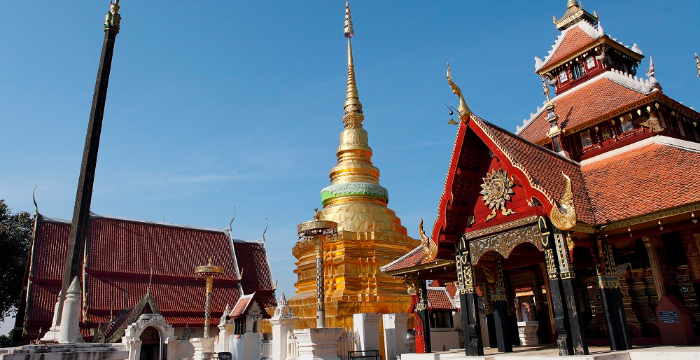

8. Kat Kong Ta Walking Street (กาดกองต้าถนนคนเดิน หรือ ถนนตลาดจีน)
Kat Kong Ta or locally called Talat Chin is an old market area situated along the Wang River. In Trok Talat Chin Rim Nam (Chinese market alley by the river), there are over 100-year-old buildings standing on the whole route of Talat Kao Road. The Kat Kong Ta Community area is considered to be an economic route with a long historical background. The meaning of Kat Kong Ta is the market in an alley by the river that experienced times of prosperity since the reign of King Rama V the Great because Lampang used to be a trading center of the North. Mostly, the trading zones were located on a large riverbank like the Wang River. Consequently, there were a variety of ethnic communities coming here for doing business; such as, British, Burmese, and particularly, Chinese, who was the largest trading group. Later, the area became a big Chinese community. For this reason, the local people called it Talat Chin (Chinese market). Today, with the love of their hometown, the people in the community have restored the old buildings to be alive again. Consequently, it has become a beautiful and unique cultural road. Moreover, the city is awakened when the walking street market is held on every Saturday-Sunday from 5.00-10.00 p.m.
Location: Talat Kao Road, Amphoe Mueang, Lampang.


9. Cultural Route Walking Street (ถนนคนเดินสายวัฒนธรรม)
Cultural Route Walking Street is situated on Wang Nuea Road by the entrance of Wat Pratu Thon Phueng or the entrance to the Ratchadaphisek Bridge that used to be a line of the city wall. On the road is located Ku Chao YaSuta, which is believed to be the Pratu Khong arched gate of Wat Kak Kaeo in the past. The cultural road is organised by the Lampang City Municipality in the form of “Kat Mua Khua Laeng” to preserve the original way of life on every Friday evening between 4.00-9.00 p.m. The activity has been started on Friday, 5 November, 2010, until today. A variety of products are offered; for example, organic vegetables, plants, local food, traditional desserts, retro products, antiques, basketry, amulet frames, carvings, silverware, cloth, shoes, handmade items, ceramics, and toys.
Location: Wang Nuea Road, Amphoe Mueang, Lampang.

10. Dhanabadee Ceramic Museum (พิพิธภัณฑ์เซรามิกธนบดี)
The Museum was founded by Mr. Phanasin Dhanabadeesakul, the second generation heir of Mr. I (Sim Yu) Sae Chin in honor of the forefather of the family, A-pa I (Sim Yu) Sae Chin who discovered kaolin clay and established the first ceramic factory of Lampang. It showcases the story and the legendary “rooster bowl of Dhanabadee” that has carried the pride of Lampang as the ceramic city of Thailand as well as the exhibition of the history of the Dhanabadee affiliated company, the origin of the rooster bowl of Lampang, and a demonstration of the rooster bowl ceramic production with the traditional method. With a purpose of conserving arts and culture and promoting ceramic knowledge and art knowledge for interested persons,visitors have a chance to closely observe the production process of modern ceramics. The Museum is open every day from 9 a.m.-5 p.m. except Monday.
Location: 32 Wat Chong Kham Road, TambonPhrabat, Amphoe Mueang, Lampang.
